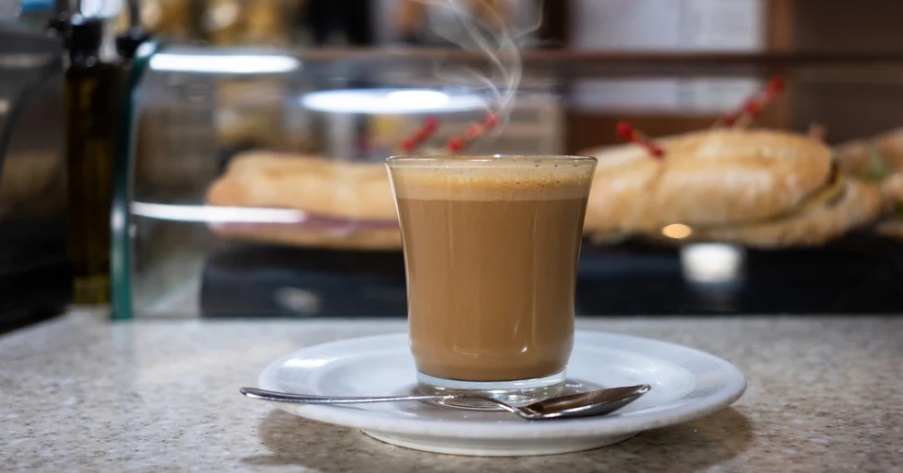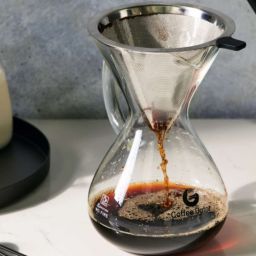
When you blend milk into your coffee, the caloric impact depends significantly on the type of milk and the amount you pour. This introduction sets the stage for understanding how such additions transform a virtually calorie-free cup of black coffee into a beverage that may need to be counted in your daily caloric intake.
Key Facts About Calories in Coffee with Milk
A typical cup of black coffee contains only about 2 calories. However, adding milk changes the game. For instance, adding one ounce of whole milk adds about 18-20 calories per ounce. The choice of milk—from whole to skim or even almond milk—alters the calorie count substantially. A standard latte with whole milk, for example, can have about 150 calories, while the same latte with nonfat milk might only have 80 calories.
Key Takeaways on Caloric Content in Coffee with Milk
- Milk Type Matters: Whole milk packs more calories than skim milk. For those watching their calorie intake but who enjoy creaminess in their coffee, skim or non-dairy alternatives might be better choices.
- Serving Size Counts: The more milk you add, the higher the calories. This is crucial when ordering larger sizes at coffee shops where the milk proportion can significantly increase the overall caloric content.
- Watch the Add-ins: Sweeteners and flavored syrups can double or even triple the calorie count. Opting for sugar-free or using less syrup can help manage calorie intake without sacrificing sweetness.
How Milk Type Affects Calorie Count
Choosing the right type of milk for your coffee can significantly affect its calorie content. Here’s a quick look at how different milks stack up:
- Whole Milk: Rich and creamy, whole milk adds about 18-20 calories per ounce. It’s a popular choice for those who prefer a richer coffee experience.
- Skim Milk: Lighter with about 10 calories per ounce, skim milk offers a way to enjoy creamy coffee without as many calories.
- Non-Dairy Alternatives: Options like almond, soy, and oat milk generally offer fewer calories, especially the unsweetened varieties. For example, unsweetened almond milk can have as few as 30 calories per cup.
Understanding these options can help you make calorie-conscious choices that align with your dietary preferences and health goals.
Caloric Impact of Milk Quantities in Coffee
The amount of milk you add to your coffee also plays a crucial role in determining the total caloric impact. Whether it’s a splash or a full cup, the volume of milk can significantly change the calorie content of your coffee:
- A Splash (1 oz): Adding just a splash of whole milk to your black coffee adds roughly 18 calories, a small but notable addition for calorie counters.
- Half Cup (4 oz): A more generous pour such as a half cup of whole milk will add about 72 calories. In a coffee shop setting, this is common in smaller latte or cappuccino servings.
- Full Cup (8 oz): Used in larger drinks or creamy lattes, a full cup of whole milk can inject about 144 to 160 calories into your beverage.
Role of Sweeteners and Creamers
Sweeteners and creamers can dramatically increase the calorie count of your coffee, often more significantly than milk alone. Here’s how these additions stack up:
Sugar: Each teaspoon of granulated sugar adds about 16 calories. Specialty drinks often include syrups, which are denser in calories due to high sugar content.
Flavored Syrups: Popular in many coffee shop drinks, flavored syrups like vanilla or caramel can add around 20 calories per pump, and typical servings can include several pumps.
Creamers: Whether dairy or non-dairy, creamers vary in calorie content but are generally denser than milk. A tablespoon of typical half-and-half adds about 20 calories, while flavored non-dairy creamers can be higher.
Awareness of these additives is key to managing your dietary intake without sacrificing the enjoyment of your coffee.
Comparisons and Examples from Popular Coffee Shops
Coffee shops often feature a wide array of beverage options, each with differing caloric contents depending on the type and size of the drink:
Starbucks: A grande latte at Starbucks, which includes 16 ounces of milk, is typically around 190 calories when made with whole milk. However, a grande caramel macchiato can be up to 250 calories due to added syrups.
Dunkin’ Donuts: A medium coffee with cream at Dunkin’ can range from 120 to 200 calories depending on the type of cream used.
McDonald’s: A standard McDonald’s latte with whole milk contains around 180 calories for a medium size, but their flavored lattes can exceed 300 calories due to additional syrups.
FAQs
Does the type of milk change the calorie count? Yes, different milks can change the calorie content significantly. For example, whole milk has more calories than skim milk.
How much does one teaspoon of sugar add? A single teaspoon of sugar adds about 16 calories to your coffee.
What’s the calorie difference between a flavored latte and a regular latte? Flavored lattes generally have more calories due to syrup additions—each pump of syrup can add about 20 calories.
Can non-dairy milk reduce the calorie count? Yes, non-dairy milks like almond or soy often have fewer calories than cow’s milk if they are unsweetened.
Final Thoughts
The type of milk and how much you use can significantly affect the calorie count of your coffee. Sweeteners, syrups, and creamers can greatly increase the calorie count, so be mindful when adding these to your coffee.
Understanding the calorie implications of your coffee choices can help you enjoy your brew without derailing your dietary goals.









